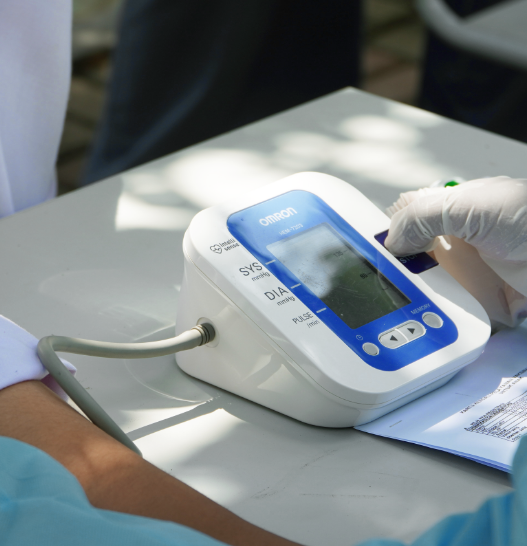Access to the Chinese medical device market offers great potential – but also comes with specific requirements, particularly in the area of usability. The National Medical Products Administration (NMPA) places a high value on human factors engineering (HFE) and usability testing to ensure safe use of medical devices.
In this article, we present the key issues you need to address to understand and successfully implement NMPA requirements.
We answer questions such as:
- What devices must usability studies be conducted for?
- What are the requirements for demonstrating usability?
- Is there any guidance from the NMPA to help you meet the requirements?
- What are the labeling and training requirements?
Read on to learn how to meet the NMPA’s usability requirements and support the approval of your product for the Chinese market.
What is the NMPA and what is its role in usability?
The National Medical Products Administration (NMPA) is China’s central regulatory authority for the approval and supervision of medical devices and pharmaceuticals. It ensures that all medical devices placed on the Chinese market meet strict safety and efficacy standards.
The NMPA plays an important role in medical device usability studies, requiring manufacturers to follow detailed human factors engineering (HFE) processes to ensure the usability and safety of medical devices. This often includes specific usability testing with Chinese users to ensure that products are safe and effective for Chinese users in real-world settings. The NMPA evaluates these studies as part of the approval process and requires comprehensive documentation to demonstrate that potential user errors have been minimized and adapted to the specific requirements of the Chinese market.
Where can I find information on usability requirements for the Chinese market?
Information on the NMPA’s usability requirements for the Chinese market can be found in the “Guideline of Usability Engineering Review for Medical Devices”. These guidelines explain the usability and safety requirements for medical devices in the Chinese market and the required Human Factors Engineering (HFE) evidence. They cover the entire process from risk analysis to formative and summative evaluation. The requirements are based on international standards such as IEC 62366-1, but with additional country-specific adaptations, such as conducting user studies in China with Chinese users and the minimum requirement of 15 participants per user group.
There is no official English translation of this guideline published by the NMPA, but unofficial translations are available on the Internet. Please note that these are for informational purposes only and have no official status.
Is there an NMPA pre-submission similar to the FDA?
Similar to the FDA, the NMPA offers pre-submission meetings where manufacturers can ask questions about the requirements of the approval process. These pre-submission meetings are particularly helpful in clarifying questions about the applicability of usability requirements and specific study requirements. At these meetings, manufacturers can discuss study requirements with NMPA representatives and receive formal feedback.
As with the FDA, these meetings are usually free of charge. However, there are a few rules to follow to ensure a successful meeting. These include early planning, detailed preparation, a good understanding of the current guidelines, and appropriate behavior during the meeting.
Do I always have to do a usability study?
Whether or not a usability study is required for the Chinese market depends on several factors. These include the risk classification of the product, the possible existence of equivalent products, or whether relevant product changes have been made to an already approved product.
The NMPA places special emphasis on Human Factors Engineering (HFE) for high-risk medical devices, i.e., products that could cause serious injury or death if used incorrectly.
If equivalent medical devices are already available on the Chinese market and their usability has been demonstrated, a company may be exempted from conducting its own usability studies under certain conditions. However, this requires proof of technical, biological and clinical equivalence and full access to the technical documentation of the reference product.
For existing products already approved for the Chinese market, new studies may be required if significant changes are made to the product design, user interface or user population. Changes that introduce new risks in use must be tested to ensure that the changes do not adversely affect safety in use.
Therefore, it is not always mandatory to conduct usability studies, but manufacturers should carefully consider whether their product falls into one of the above categories in order to comply with NMPA requirements.
Do I have to conduct usability studies in China?
Yes and no. For imported high-risk products, the NMPA generally requires that usability studies be conducted in China to ensure that the product is suitable for the Chinese market. This is especially true when cultural differences or adaptations for Chinese user groups are relevant.
Conducting a study in China can be avoided if the manufacturer can demonstrate that the product is safe even when cultural differences are taken into account, and that user behavior in the target market does not require significant adaptation. This requires comprehensive international data and analysis to demonstrate that the safety and usability requirements of the Chinese market are fully met.
For products with no high-risk use and no identified unacceptable risks, studies in the manufacturer’s country may be sufficient.
Who organizes studies in China?
For high-risk devices, studies are typically organized by certified local partners or authorized third parties who are familiar with NMPA requirements. These partners coordinate and conduct usability testing, often in collaboration with the manufacturer, to ensure that all testing and documentation meets requirements.
Manufacturers often work with Contract Research Organizations (CROs) that specialize in the Chinese market and have the necessary certifications to conduct the studies. These organizations ensure that all studies are conducted in accordance with NMPA requirements and that the results are properly documented.
Studies, including those for moderate-risk products, may not be conducted by the manufacturer’s own personnel. For study planning, coordination and support, manufacturers often turn to specialized usability agencies such as Custom Medical.
What is the required scope of usability studies in China?
Usability studies for the Chinese market must be comprehensive enough to cover all relevant user groups and minimize critical application errors. The NMPA specifies certain numbers of participants (e.g. at least 15 participants for basic user groups) and requires that all critical and common use cases are covered. These studies must also focus on the specific environment and requirements of Chinese users.
How do I define the right user group for the Chinese market?
For successful approval, you must demonstrate that the target audience can use your product safely. Chinese market surveillance expects a broad test group that represents the country’s age and educational diversity. For products used by healthcare professionals, you should also define user profiles and recruit appropriate test subjects.
For consumer products, it is especially important to create a representative test group that includes less technologically savvy users. Custom Medical can help you recruit the right users to ensure that your target audience is well represented in the test.
What kind of environment is required for usability testing in the Chinese market?
A realistic environment is essential to test the usability of your product under realistic conditions. For example, if your product will be used in a busy environment such as an urban hospital, you should create comparable noise and distraction levels during testing. Keep in mind that environmental requirements for the Chinese market may be more stringent than in other countries.
What specific labeling requirements do I need to consider for my medical device in China?
All labeling and instructions for use must be in Simplified Chinese to ensure that they are understandable to the target audience. Information should be concise and easy to understand to avoid misinterpretation. This includes using clear symbols and pictograms that are internationally recognized and culturally appropriate.
Because cultural differences influence user behavior and expectations, manufacturers should be aware of whether certain colors, symbols or terminology are interpreted differently in China and how this might affect usability.
In addition, labeling must meet the specific requirements of the NMPA, including product name, model, manufacturer information, production date, expiration date, and relevant warnings.
What are the requirements for instructional materials?
The NMPA requires that medical device training materials be written in simplified Chinese to ensure clear and understandable use by the intended audience.
These materials must include all safety-related information, such as operating, maintenance and troubleshooting instructions, as well as specific safety warnings. In addition, cultural adaptation is required so that symbols and examples are easily understood and appropriate for Chinese users.
Materials must also comply with current NMPA requirements and should be updated regularly to ensure smooth and safe product use.
Are there special requirements for usability testing documentation for the NMPA?
The NMPA requires comprehensive documentation of the usability engineering process, covering all phases from planning to execution to evaluation. Manufacturers must create detailed test plans that clearly define tasks, methods, and success criteria, and maintain protocols that clearly document the study process and results.
The selection of test participants must be representative of potential Chinese users to ensure that the results are applicable to the target audience. The test results must be analyzed in a structured report that describes usability problems, their causes, and proposed risk mitigation measures, and these findings must be incorporated into the product’s risk management.
Cultural and linguistic aspects must also be considered in the documentation, as the tests should reflect conditions in the Chinese market as realistically as possible.
Conclusion
Access to the Chinese market offers significant potential for medical device manufacturers, but requires a thorough understanding of the NMPA guidelines for usability testing and human factors engineering.
While the NMPA requirements for usability studies are closely aligned with international standards such as IEC 62366-1, there are specific adaptations that must be considered. These include the requirement to conduct usability testing with Chinese users to account for cultural, linguistic, and system-related differences. There are also clear requirements for labeling, documentation and training materials that go beyond international standards.
For manufacturers, this means:
Early planning of usability testing is critical to avoid delays in the approval process.
- Selecting the right user groups is essential – for successful testing, the tests must be representative of the Chinese target group.
- The study should be supervised by local experts or specialized agencies to ensure that NMPA requirements are fully met.
- Pre-submission meetings with the NMPA may be useful to clarify outstanding issues and coordinate study requirements at an early stage.
- Documentation must be complete and understandable, as the NMPA requires a detailed review of all evidence.
By addressing NMPA requirements early, developing a sound usability strategy, and working with the right partners, you can not only make the approval process more efficient, but also ensure that the product is optimally adapted to the needs of Chinese users.
Need help implementing the NMPA usability requirements? We can help you plan, conduct, and document your usability studies for the Chinese market.



